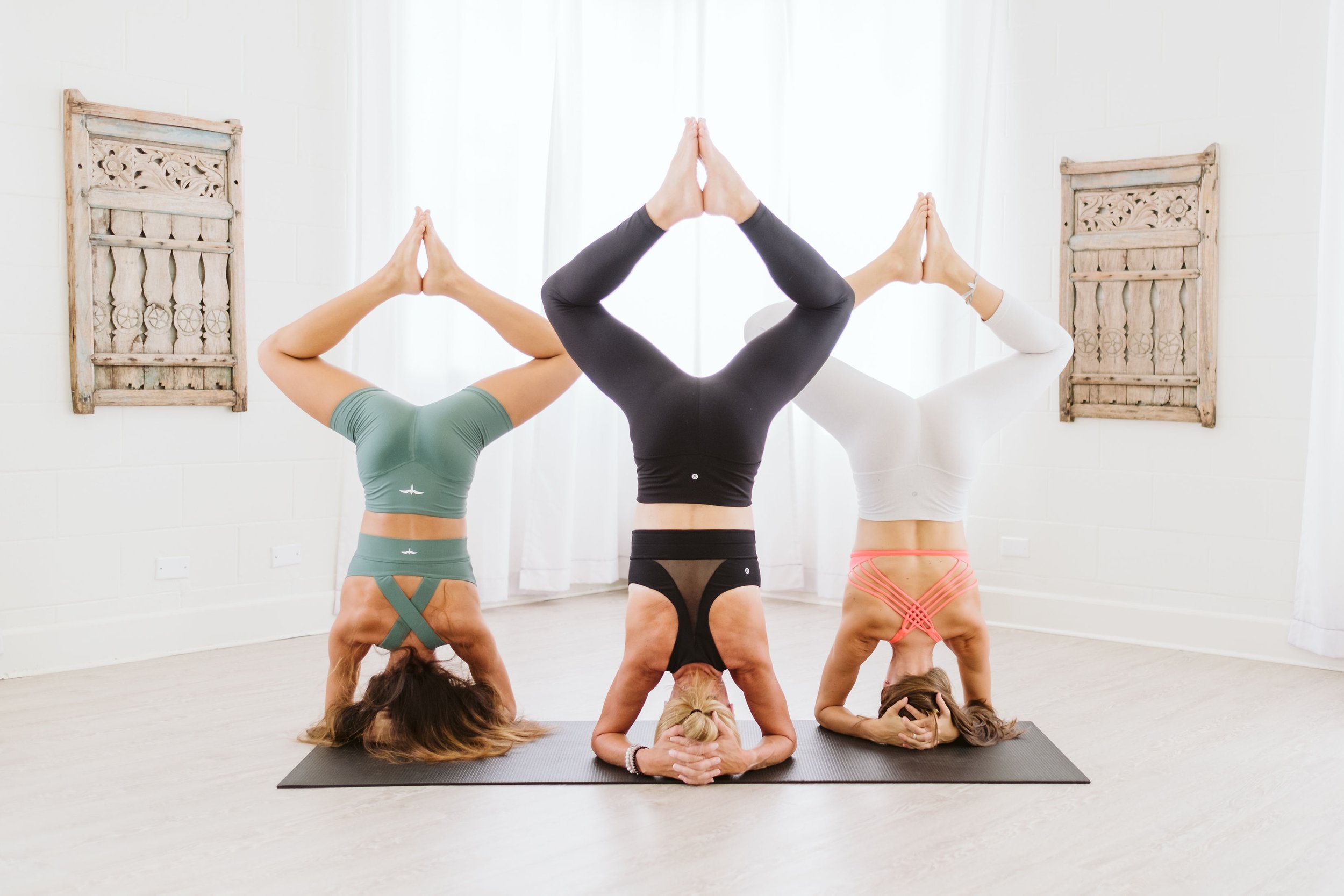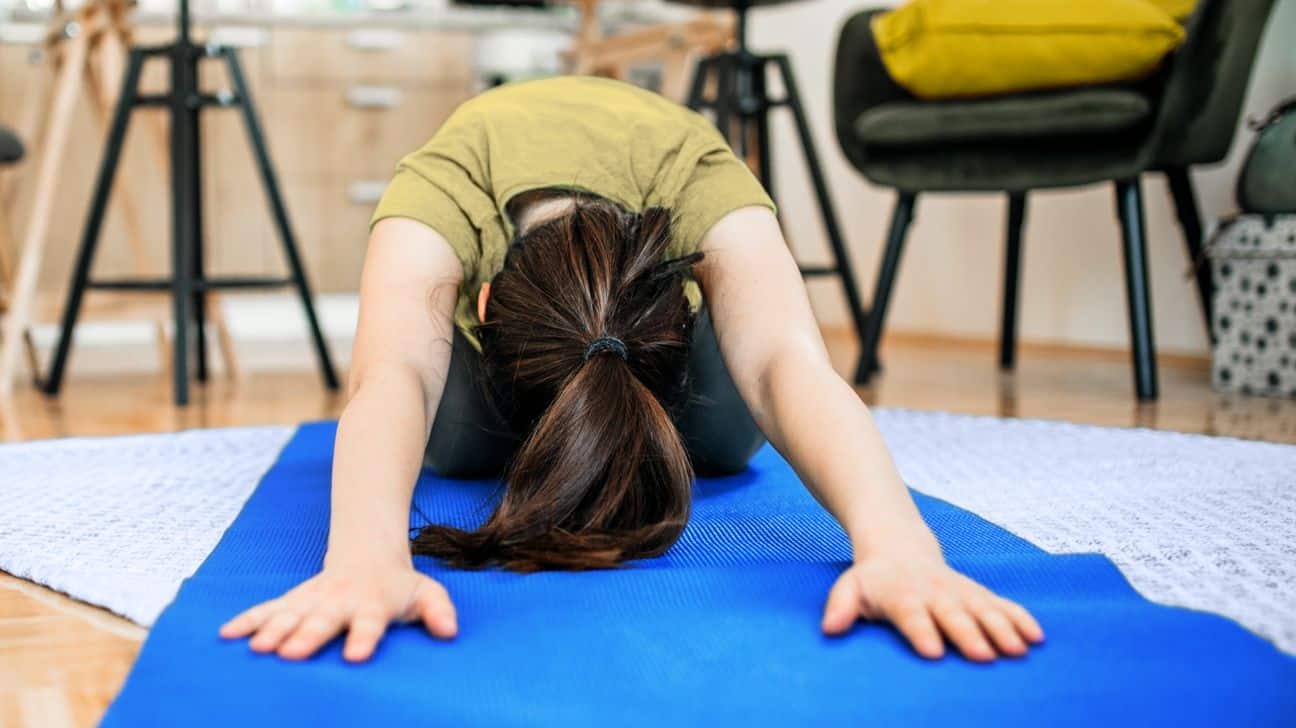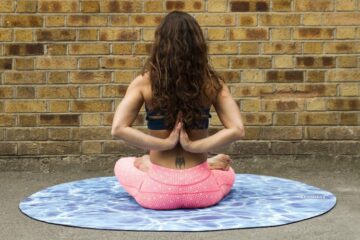Looking to improve your flexibility and joint health? Flex & Flow yoga is the perfect practice to achieve your goals.
This dynamic form of yoga focuses on enhancing both flexibility and overall joint health. By blending stretching, strengthening, and flowing movements, Flex & Flow yoga promotes mobility and reduces stiffness, helping you to move more easily and comfortably throughout your day.
Whether you’re a beginner or experienced yogi, incorporating Flex & Flow into your routine can help you achieve greater flexibility and support joint health for improved overall well-being. Read on to discover the numerous benefits of Flex & Flow yoga and how it can positively impact your physical and mental health.

Credit: www.yogaroomhawaii.com
Benefits Of Yoga For Flexibility
Discover the transformative benefits of yoga for flexibility and joint health with Flex & Flow. Enhance your body’s range of motion and improve overall joint mobility through a holistic yoga practice.
Improved Range Of Motion
Improved Range of Motion is one of the key benefits of practicing yoga for flexibility. The various asanas or poses in yoga are designed to gently stretch and strengthen the muscles, tendons, and ligaments in the body.
When you regularly practice yoga, you gradually increase your flexibility, allowing your body to move more freely and with greater ease. Flexibility is vital for maintaining a healthy range of motion in all of your daily activities, whether it’s reaching to pick up something from the floor, bending to tie your shoelaces, or performing sports or fitness activities.
Yoga helps to lengthen tight muscles and release tension, which can become a common cause of restricted movement. By increasing flexibility, yoga not only improves your physical performance but also contributes to overall joint health and prevents stiffness and soreness.
Reduced Risk Of Injury
Another significant benefit of yoga for flexibility is the reduced risk of injury. Developing flexibility in the muscles and joints helps to improve your body’s ability to withstand physical stress and strain. It enhances your body’s resilience and lowers the chances of muscle tears, sprains, and other injuries.
When your muscles are flexible, they are more supple and can absorb impact and movement more efficiently, reducing the likelihood of overstretching or tearing. Likewise, by improving your range of motion, yoga helps to create balance in the body, ensuring that no one area becomes overly strong or weak, which could lead to compensations and increased injury risk.
Furthermore, yoga teaches body awareness, mindfulness, and proper alignment. This knowledge and attention to detail help you move with good form and technique, minimizing the risk of joint strain and injury.

Credit: www.amazon.com
Yoga Poses For Flexibility
Discover the power of yoga poses for flexibility and joint health with Flex & Flow. Improve your range of motion and promote overall well-being through targeted stretches and mindful movements. Enhance your flexibility and find balance on the mat with our expert guidance.
Yoga Poses for Flexibility Yoga is not just about improving flexibility but also about promoting joint health. Incorporating specific yoga poses can greatly enhance flexibility and joint mobility. Consistent practice of these poses can lead to increased range of motion and a reduced risk of injury, offering both physical and mental benefits. Here are some fundamental yoga poses specifically designed to foster flexibility and joint health. Forward Folds One of the most effective ways to improve flexibility is through forward folds. This pose stretches the entire back body, including the hamstrings, calves, and lower back. It also allows for a deep release in the spine, promoting relaxation and reducing tension. The calming effect of forward folds can help alleviate stress and anxiety, making it an essential addition to any flexibility-focused yoga routine. “`html
Forward Folds
“` Backbends While they may seem challenging, backbends are a crucial component of a flexibility-focused yoga practice. These poses open up the chest, shoulders, and hip flexors, promoting an expansive range of motion in the spine. By engaging and stretching the muscles along the front of the body, backbends help to counteract the effects of prolonged sitting or slouching, which can lead to improved posture and reduced back pain. Incorporating backbends can bring a sense of renewed energy and vitality to the body. “`html
Backbends
“` Hip Openers Opening up the hips is essential for overall flexibility and joint health. Hip openers in yoga help release tension and tightness in the hips, groin, and lower back, leading to increased flexibility and improved range of motion. These poses also stimulate the sacral chakra, which is associated with emotions and creativity, fostering a sense of emotional release and balance in addition to physical benefits. “`html
Hip Openers
“` Incorporating these fundamental yoga poses for flexibility into your practice can lead to profound improvements in both physical and mental well-being, making it a valuable addition to any fitness routine.
Yoga Props To Enhance Flexibility
Yoga props play a crucial role in enhancing flexibility and joint health during yoga practice. They offer support, deepen stretches, and help maintain proper alignment, enabling practitioners to safely explore and expand their range of motion. Let’s delve into three essential yoga props – blocks, straps, and bolsters – that can significantly improve flexibility and joint mobility.
Yoga Blocks
Yoga blocks are versatile props that provide stability and support, allowing practitioners to attain proper alignment in challenging poses. They can be used to modify standing, sitting, and balancing asanas, enabling individuals of all levels to experience the benefits of each posture while avoiding strain or injury.
Straps
Yoga straps are invaluable tools for deepening stretches and accessing a wider range of motion. They assist in achieving full extension in poses that might be otherwise challenging due to limited flexibility. By using yoga straps, practitioners can gradually work towards improved flexibility and alignment over time.
Bolsters
Bolsters provide gentle support to the body as it relaxes into restorative poses, promoting flexibility and ease in the joints. Whether used for gentle heart openers or for supporting the knees and hips in seated postures, bolsters are essential for creating a nurturing and deeply relaxing yoga practice that enhances overall flexibility and joint health.

Credit: liforme.com
Flexibility And Joint Health
Flexibility and joint health go hand in hand when it comes to maintaining a healthy and active lifestyle. The ability to move freely and have a wide range of motion in our joints is not only important for our physical well-being but also plays a crucial role in preventing injuries and promoting overall longevity.
Importance Of Joint Health In Flexibility
Understanding the importance of joint health in achieving flexibility is essential. Joints act as the connectors between bones, allowing various movements such as bending, twisting, and extending. When our joints are healthy, we can move with ease and engage in daily activities without limitations. However, when joint health is compromised, it can lead to stiffness, pain, and reduced flexibility.
Keeping our joints healthy is crucial as it helps to enhance our overall mobility and flexibility. To achieve optimal flexibility, it’s pivotal to maintain strong and supple joints. By doing so, we can improve our physical performance, prevent injuries, and enhance our quality of life.
Yoga Practices For Joint Health
Yoga has been practiced for centuries and offers a wide range of exercises and poses specifically aimed at promoting joint health. Incorporating these yoga practices into our routine can greatly benefit our joints and contribute to overall flexibility. Here are some yoga practices that can help maintain healthy joints:
- Joint Mobilization Exercises: These exercises work to increase the range of motion in joints and improve synovial fluid circulation, which helps in lubricating the joints.
- Low-Impact Yoga Poses: Practices such as Hatha yoga and Yin yoga involve gentle stretching and holding poses for an extended period. These poses can help improve joint flexibility and relieve stiffness.
- Active Range of Motion Exercises: These exercises involve moving joints through their complete range of motion, which helps to maintain and improve joint flexibility.
- Balance and Stability Poses: Yoga poses that require balance and stability, such as tree pose or warrior pose, can help strengthen the muscles around the joints and improve joint stability.
- Restorative Yoga: This practice involves holding relaxing poses with the support of props, allowing the body and joints to release tension and promote healing.
Incorporating these yoga practices into your fitness routine can help you maintain healthy joints, improve flexibility, and enjoy the benefits of an active lifestyle. Remember, always listen to your body, start with gentle movements, and gradually increase intensity. Yoga for joint health and flexibility can be practiced by individuals of all fitness levels and is a wonderful way to support your overall well-being.
Incorporating Flexibility Training Into Your Routine
Flexibility is key to maintaining optimal joint health and overall physical well-being. By incorporating regular flexibility training into your routine, you can improve your range of motion, reduce the risk of injury, and enhance your performance in other physical activities. Here are some effective ways to include flexibility training in your daily regimen.
Scheduling Flexibility Sessions
One of the simplest ways to ensure that you consistently engage in flexibility training is to schedule dedicated sessions for it. This means setting aside specific time slots in your calendar solely for stretching and flexibility exercises. Whether it’s in the morning to kickstart your day with increased mobility or in the evening to unwind and release tension, having a fixed schedule for flexibility sessions helps you stay committed. Treat these sessions as non-negotiable appointments with yourself to prioritize your joint health.
Complementing Flexibility With Strength Training
Flexibility and strength go hand in hand when it comes to optimizing joint health. While flexibility training focuses on lengthening and elongating muscles, strength training targets muscle development and stability. Combining these two types of exercises can lead to a well-rounded fitness routine that supports joint health comprehensively.
When incorporating flexibility training into your routine, be sure to also integrate strength training exercises that target the same muscle groups. By doing so, you promote muscular balance and decrease the risk of joint imbalances or instability. For example, if you focus on stretching your hamstrings, complement it with exercises like squats or lunges to strengthen those muscles.
Remember, flexibility without strength may lead to potential joint issues, while strength without flexibility can hinder your range of motion. Striking a balance between the two is key to maintaining optimal joint health.
Additional Tips And Considerations
Here are a few more tips to help you make the most of your flexibility training and promote joint health:
- Start your flexibility sessions with a warm-up to prepare your muscles and joints for stretching.
- Engage in a variety of stretching techniques, such as static stretching, dynamic stretching, and proprioceptive neuromuscular facilitation (PNF) stretching, to target different muscle groups and achieve maximum flexibility.
- Listen to your body and never force a stretch beyond your comfort zone to avoid injury. Gradually increase the intensity and duration of stretches over time.
- Consider incorporating activities like yoga or Pilates into your routine, as they naturally include a combination of flexibility and strength training.
By incorporating flexibility training into your routine and complementing it with strength exercises, you can maintain healthy joints, improve your overall fitness, and enhance your performance in various physical activities. Make it a priority to schedule dedicated flexibility sessions, and remember to listen to your body as you gradually work towards increased flexibility.
Frequently Asked Questions Of Flex & Flow: Yoga For Flexibility And Joint Health
How Does Yoga Help Improve Flexibility And Joint Health?
Yoga combines stretching, strengthening, and balancing exercises that target muscles and joints, improving flexibility and joint mobility. Regular yoga practice can increase range of motion, reduce stiffness, and enhance joint stability, leading to improved flexibility and joint health over time.
Which Yoga Poses Are Best For Improving Flexibility?
Poses like downward dog, standing forward bend, and cobra pose are great for stretching the back and hamstrings. Warrior II, triangle pose, and camel pose help open up the hips and increase flexibility. Incorporating these poses into your yoga routine can help improve overall flexibility and joint mobility.
Can Yoga Help With Joint Pain?
Yes, yoga can help alleviate joint pain. Gentle, low-impact yoga poses and movements promote joint lubrication and strengthen the muscles around the joints, reducing pain and inflammation. Yoga also helps improve balance and posture, which can further relieve joint stress and discomfort.
Conclusion
Flex & Flow: Yoga for Flexibility And Joint Health is a holistic approach to improving both physical and mental wellness. By incorporating yoga into your regular fitness routine, you can experience increased flexibility, improved joint health, and enhanced overall well-being.
Through consistent practice, you can unlock the full potential of your body, promoting better mobility, posture, and strength. So, start embracing the power of yoga today and reap the transformative benefits it offers. Embrace the flow and let your body and mind awaken to a new level of flexibility and joint health.



